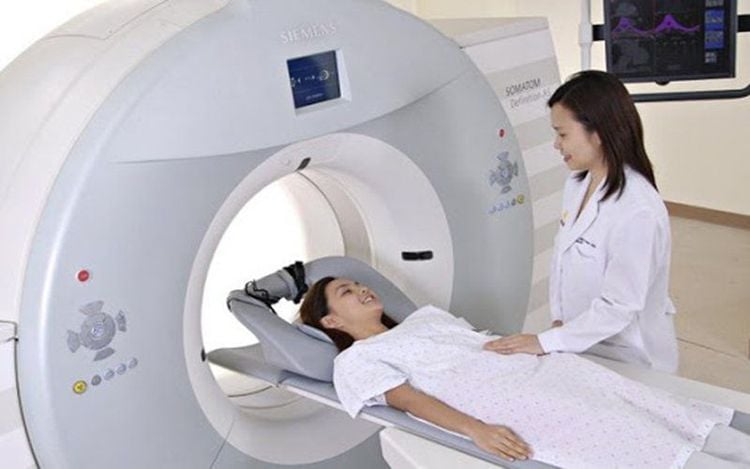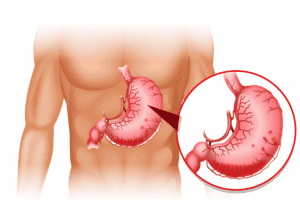This is an automatically translated article.
The article is professionally consulted by Master. BSCK II Phan Thi Minh Huong - Gastroenterologist - Department of Medical Examination & Internal Medicine - Vinmec Da Nang International General Hospital.Periodic gastric examination can help detect diseases related to the stomach and digestion when there are no specific symptoms to have timely intervention methods to avoid unwanted complications.
1. Why do you need a stomach exam?
Gastrointestinal diseases occur frequently, making patients tired, affecting their activities and life, so it is necessary to visit a gastroenterologist to diagnose the cause. In addition, periodic gastric examination can help you detect diseases related to the stomach and digestion when there are no specific symptoms to have timely intervention methods, avoiding unwanted complications. would like.If you have any of the following signs or medical history, you should seek medical attention immediately. Specifically:
Frequent dull abdominal pain, pain in the epigastrium, pain occurs when hungry or eating spicy food. Or nausea, loss of appetite, heartburn, heartburn, bloating, indigestion Difficulty swallowing, hiccups on food or water Constipation or diarrhea for many days Unexplained weight loss History of HP infection or a family member with a history of gastrointestinal cancer. Poor nutrition or eating a lot of seafood. People who smoke, abuse alcohol every day or who are obese or overweight.

Người lạm dụng chất kích thích cần đi khám dạ dày định kỳ
2. What is a gastric exam?
Accordingly, gastric examination is the examination of the entire stomach by the following methods:Diagnosis is based on clinical symptoms: The doctor can base on clinical symptoms and medical history. Pain management and location to diagnose the disease. However, this method needs to perform a number of other tests and ultrasounds to increase the ability to diagnose the disease accurately. Gastroscopy: This is a necessary step in the examination of the stomach, helping to provide clear and accurate images of the stomach. Breath test: The patient will be tested for breath and then given a pill called UBIT to detect whether Hp bacteria are in the stomach or not. X-ray: Contrast X-ray is also a method of examining the stomach. The advantage of this method is that through the images, doctors can detect some abnormal manifestations of the stomach such as: gastric torsion, gastric tumor, deformed duodenal bulb... Stool test: A stool test will also help to make a judgment about the disease that the patient is suffering from. Blood test for antibodies: Stomach examination by blood test is applied to find Hp bacteria in the stomach. When Helicobacter pylori is present, the body will produce an antibody corresponding to this bacterium. If the blood test shows the presence of this type of antibody, it means that you have a history of stomach Hp infection or Hp bacteria in the stomach. Stomach ultrasound: An ultrasound machine is used to examine the stomach. The doctor can detect abnormalities in the stomach and screen for cancer (images of lymph node metastasis or nearby organs, ...). Stomach MRI: This technique uses magnetic fields and radio waves to create detailed images of the body's organs. Stomach CT scan: This method uses X-rays to create cross-sectional images of the body to obtain images of the stomach to diagnose the extent, tumor, and diverticulum in this area.

Khám dạ dày bằng các phương pháp xét nghiệm hình ảnh
3. Stomach examination procedure
Accordingly, when having a gastric exam, you will be examined and followed the steps below:Step 1: Complete the examination registration procedure: Get an information sheet and then fill in your personal information completely. Step 2: Clinical examination: The doctor will ask about your previous medical history, medications you are taking, symptoms of digestive disorders you experience, daily living habits, your occupation... Step 3: Preclinical examination: To make an accurate conclusion, disease risk, the doctor will perform an intensive subclinical physical examination. Depending on the patient's condition, the doctor will assign appropriate paraclinical examination methods such as: tests, X-rays, gastroscopy... Step 4: Get results: After testing Once the test is done, you will receive the diagnostic results. The doctor relies on the test results to analyze your medical condition to have the appropriate treatment options.
4. Note when examining the stomach
Before going to the gastroenterology, the patient should note:The patient needs to fast for at least 6 hours, fast for at least 2 hours before if it is necessary to use the gastroscopy method. Do not drink alcohol, beer, carbonated water, colored drinks before gastroscopy. Inform the doctor about the drugs used, the diseases that have been acquired and whether there are drug allergies. After the endoscopy, the patient is not allowed to spit, eat or drink within 30 minutes. Need a family member to accompany and take home after gastroscopy.
Please dial HOTLINE for more information or register for an appointment HERE. Download MyVinmec app to make appointments faster and to manage your bookings easily.













